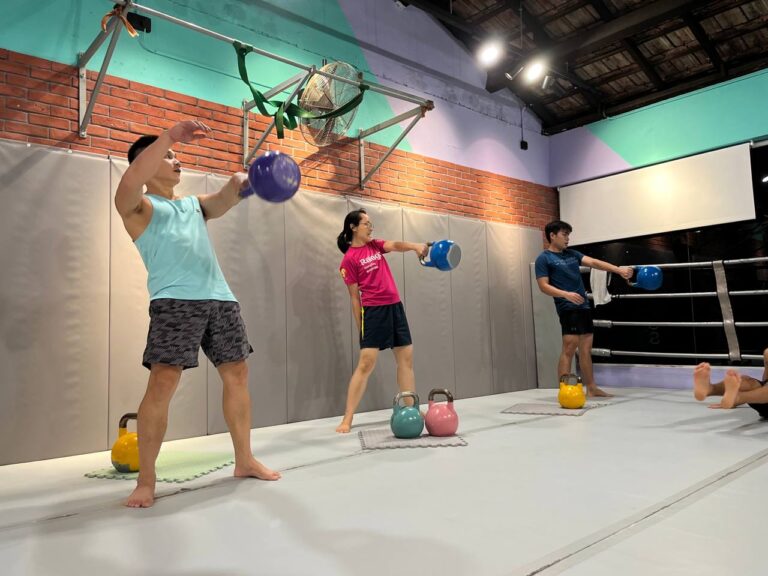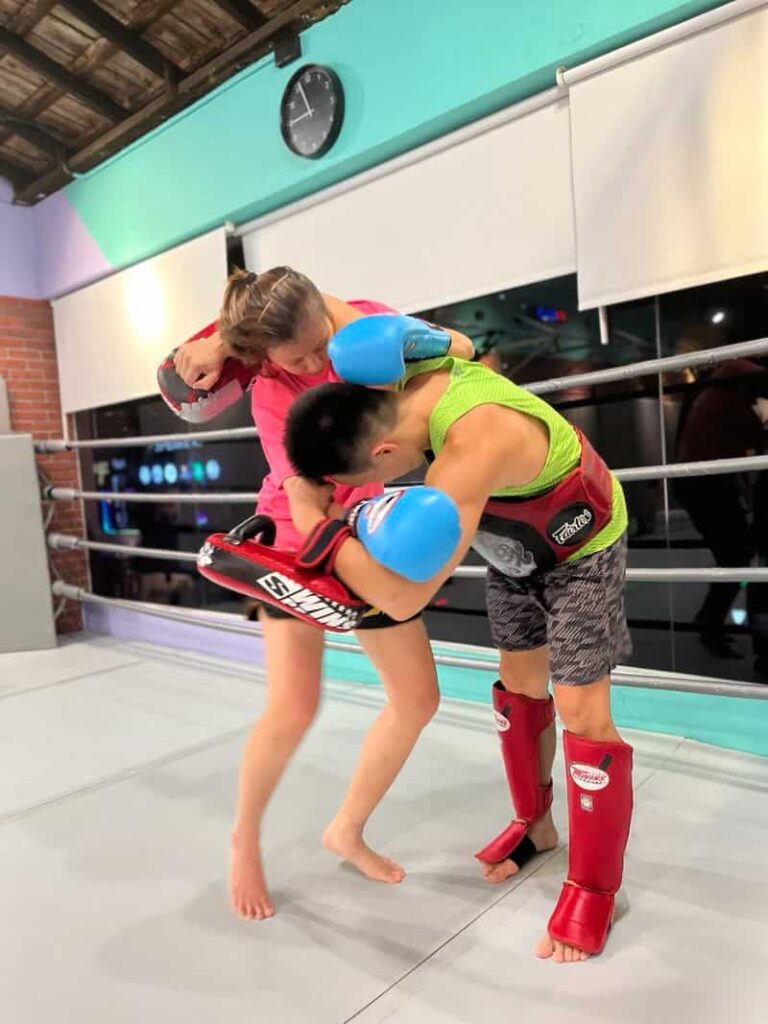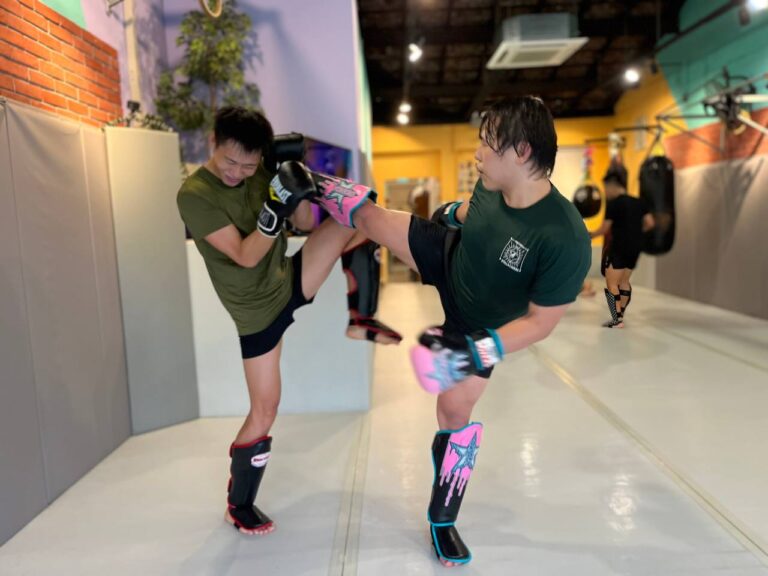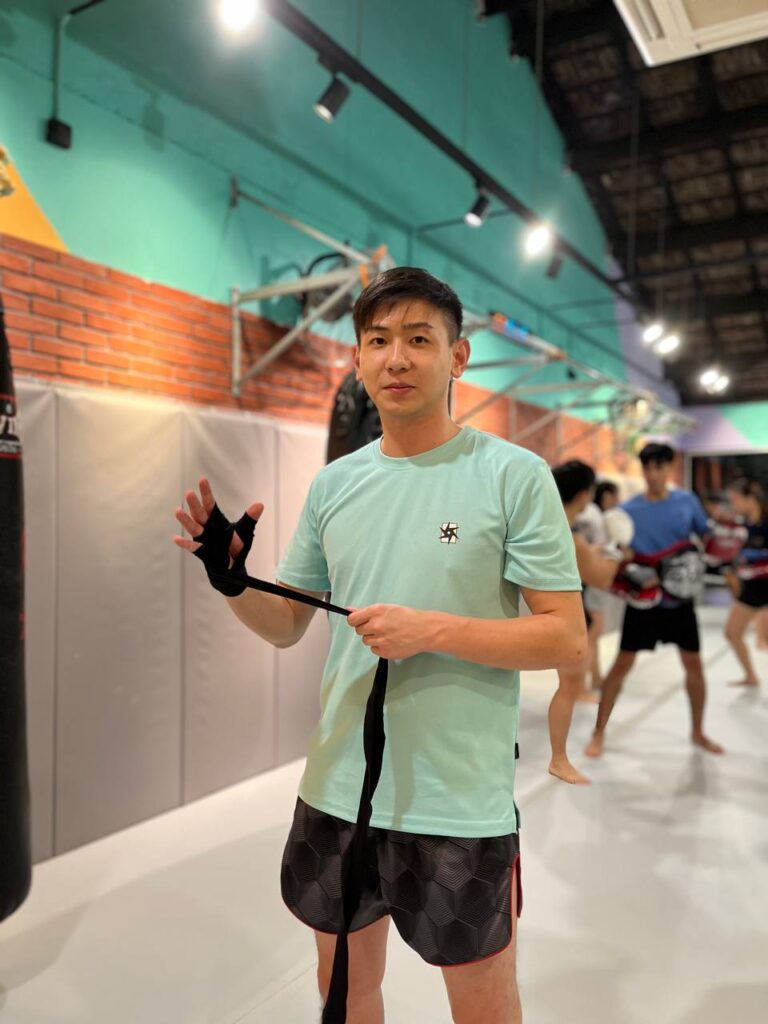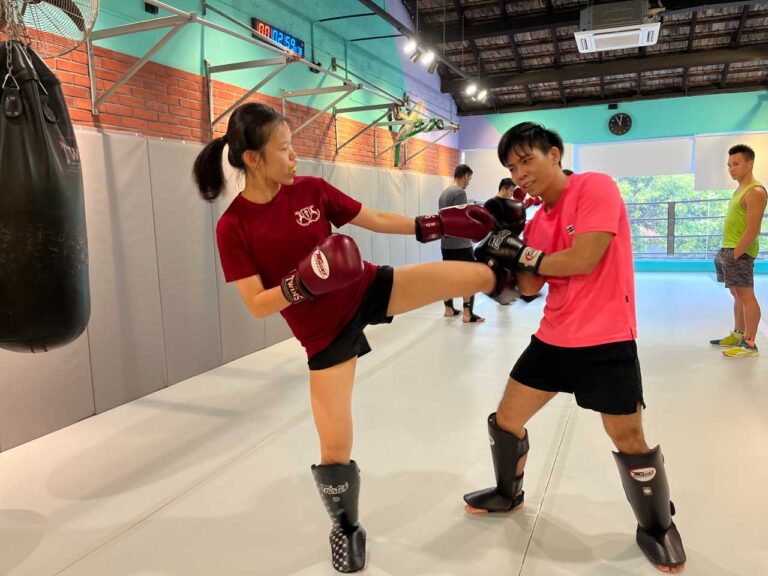Essential Muay Thai Techniques For Beginners

Muay Thai distinguishes itself from other combat sports like boxing or karate by effectively combining punches, kicks, knees, and elbows. Understanding essential Muay Thai techniques is key to building strong fundamentals in the sport. Let’s explore these techniques together.
- Kicks: In Muay Thai, there are a variety of kicks known for their power and versatility. They are crucial to deal damage, keep opponents at bay, and score points in competition. The main types of kicks in Muay Thai are:
-
- Roundhouse Kick: The roundhouse kick is the quintessential weapon in Muay Thai. It can be targeted at the torso or head, making it a dangerous tool. When thrown with the right technique, the roundhouse kick can be very destructive. Throwing a powerful kick requires both strength and flexibility.
- Push Kick/Teep: The push kick, as the name suggests, is used to push, thus increasing distance between you and your opponent, it is also used to disrupt their rhythm and balance. It can be targeted at the torso, face, or thigh making it an effective tool for distance control, dealing damage or to set up other strikes.
- Low Kick: The low kick targets the side of the opponent’s thigh. With repeated kicks over time, the damage adds up, compromising their ability to stay mobile and defend other attacks. It is an extremely effective tool, as it requires little effort and has a great payoff.
- Punches: Punching, a crucial component of Muay Thai that requires power and precision. The key to sharp, powerful punches is in the rotation of the body. The primary punches in Muay Thai include:
-
- Jab: The jab is a quick, straight punch with the lead hand. It is a great tool for gauging distance, disrupting your opponent’s tempo and setting up different strikes.
- Cross: The cross is a powerful straight punch thrown with the rear hand. The force generated by rotation of the body, makes the cross a devastating weapon when thrown correctly. It is slower than the jab but its reach and power make up for it.
- Hooks: Hooks are curved punches targeted at the side of your opponent’s head. They have a shorter range than the straight punches and are usually thrown in closer quarters. Opponents usually prioritize guarding the front of their face that allows hooks to sneak in from the sides.
- Uppercuts: Uppercuts are vertical punches that target an opponent’s chin from underneath. They are mostly used in close-range, and in combinations with hooks. This is the least blocked punch out of the four above hence when dirty boxing, it is particularly effective.
- Knees: Knee strikes are powerful short-range weapons most often thrown during clinching. There are several variations:
-
- Straight Knee: The straight knee targets the opponent’s body or head in a forward motion. It is often utilised in the clinch to inflict damage, or snuck in after a punch combination.
- Round/Circular Knee: In a tight clinch, the round knee is the most common strike. It follows a semi-circular motion to target the side of the opponent’s ribs, thus requiring less space between you and your opponent when throwing the strike as compared to straight knees.
- Elbows: Elbows are one of the most damaging short-range weapons and what sets Muay Thai apart from other combat sports. They can often cause serious cuts and even knockouts when they land flush on the opponent’s head. There are various elbow strikes in Muay Thai, including:
-
- Horizontal Elbow: This elbow variation involves a swinging the arm horizontally in similar motion to the hook, while keeping it bent to expose the sharp elbow bone. It is usually targeted at the opponent’s temple, cheek or jaw.
- Upward Elbow: The upward elbow is similar to the uppercut punch where the elbow is thrown in a slicing motion from underneath then upwards and slightly forward. It aims to hit the opponent’s on the face, chin, jaw or forehead.
- Tomahawk Elbow: This is an elbow that comes over the top and is by far the hardest to predict and block. However, it takes longer to set up and the face is usually left open during execution. It is a high risk, high reward move.
Fluid combinations of these strikes make Muay Thai truly an art form. At first glance, it might seem like just brutality and violence, but look deeper and you’ll find that it tests one’s creativity, and adaptability while under immense pressure. The most ingenious and technical fighters start off with mastering the basics and so should you. Keep at it with conscious and consistent practice and soon you will be able to express yourself freely while sparring and in the ring.
– Coach Yij @cowsgo_rebel

